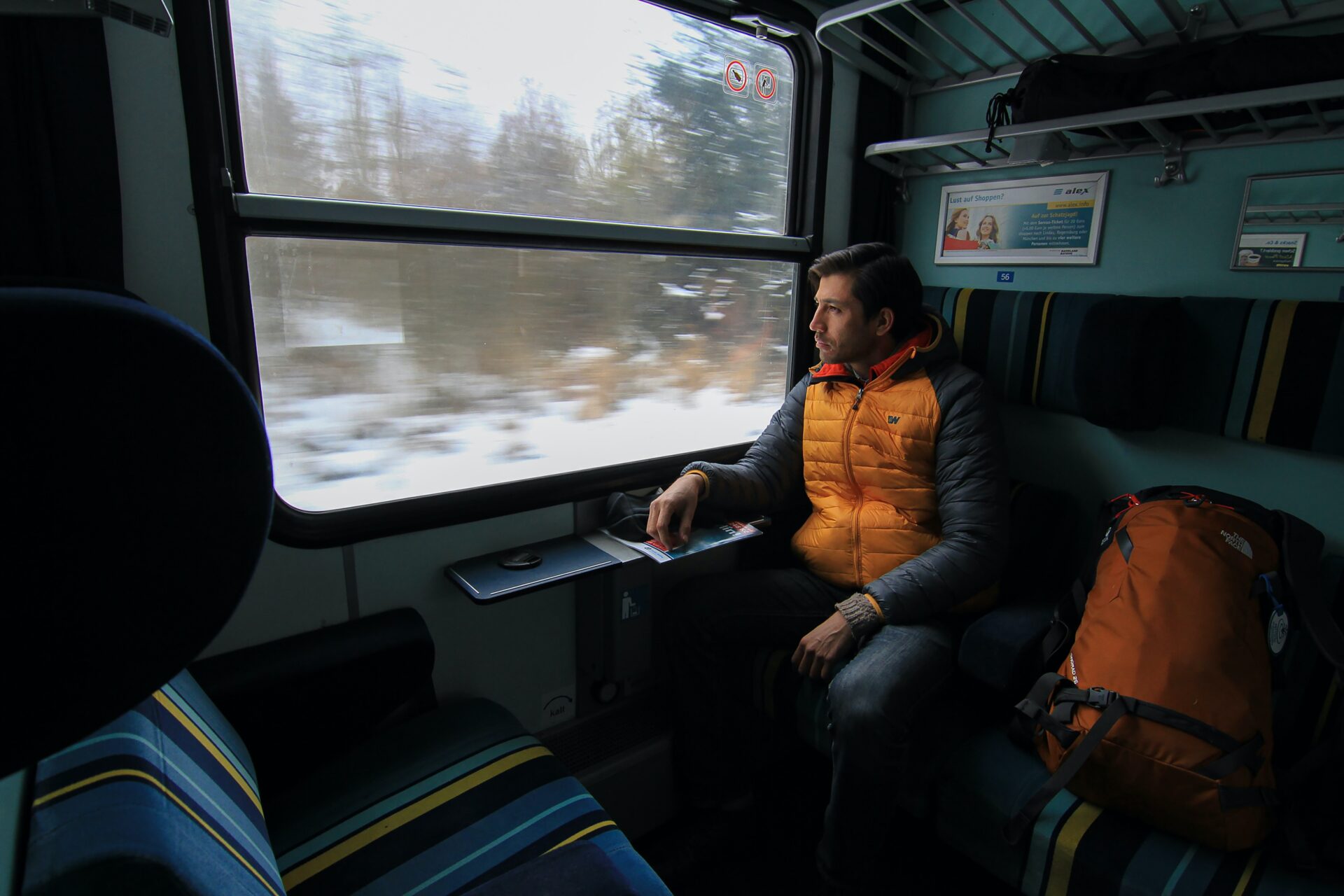A Beginner’s Guide to Interrailing Europe in 2024; prices, passes, planning, and Itineraries
Interrailing is a unique way to explore Europe, and it’s an adventure that combines the romance of travel with the freedom of the railways. With an Interrail pass, you can visit multiple countries and cities by train while experiencing the diversity and culture of Europe in a way that’s impossible by any other means of transportation.
As you travel by train, you’ll have the opportunity to admire stunning landscapes, meet new people, and discover hidden gems along the way. You’ll have the freedom to go wherever your curiosity takes you, and you’ll be able to travel at your own pace without the stress of navigating unfamiliar roads or fighting traffic.
Whether you’re a seasoned traveler or a first-time Interrailer, there’s something remarkable about the experience of Interrailing. It’s a journey that will stay with you long after you’ve returned home, and it’ll create memories that you’ll treasure forever.
Page Contents
What is interrailing?
Interrailing is a way of traveling around Europe by train using an Interrail pass. This pass allows you to travel on the rail networks of the 33 countries, and it can be purchased by anyone who is a resident of Europe.
Several types of Interrail passes are available, including global passes that allow you to travel to all 33 countries in the Interrail network. They also have one-country passes that allow you to travel within a single country. You can also choose between first-class and second-class passes, between passes that are valid for a certain number of days within a specific time period and those that are valid for a certain number of travel days within a specific time period.
The big difference of this Interrail pass is the fact that you can take as many trains as you like within the validity of your pass, except for some high-speed and overnight trains which require reservations and come with an additional cost.
Interrailing is a popular way to see Europe, especially for young people and students as it’s a flexible and convenient way to travel, and it allows you to see many different places quickly.
How does such an Interrail pass work?
As we explained, the Interrail pass is a train ticket that allows you to travel on the rail networks of the 33 European countries included in the Interrail network.
As with all train tickets, you must validate an Interrail pass before your first journey. This involves writing the date and time of your first journey in the designated space on the pass.
Once your pass is validated, you can start using it to travel by showing your pass to the conductor when you board the train. From there on, you’ll have the freedom to take as many trains as you like within the validity of your pass. You can travel on any train that is included in the Interrail network as long as you have a valid pass and, if necessary, a reservation.
If you rather use the mobile Interrail pass, you will need to have the Interrail app installed on your phone (and have an active internet connection during your trip).
To validation on the app is pretty straightforward; you will need to open the app and tap on the pass in your pass wallet. Then, tap on the “Validate Pass” button and enter the date and time of your first journey. Once your pass is validated, you can start using it to travel.
How much does interrailing cost?
As you can imagine, the cost of an Interrail pass depends on the type of pass you choose, as well as the class of travel (first or second) and the duration of your trip.
Global passes, which allow you to travel to all 33 countries in the Interrail network, start at around €441 for a second-class 5-day pass for adults, while it’s €619 for a first-class 5-day pass. One-country passes on the other hand – which allow you to travel within a single country – start at around €67 for a second-class 5-day pass.
There are also a few flexible passes available that are valid for a certain number of days within a certain time period and others that focus on the number of travel days. The number of travel days refers to the number of days you can actually take a train, while the number of days refers to the number of days the pass is valid, regardless of whether you take a train or not.
While the cost of an Interrail pass may seem high initially, it can be used as a cost-effective way to travel if you plan to take a lot of trains. It’s also a sustainable way to explore Europe, allowing you to reduce your carbon footprint and minimize your environmental impact. By traveling by train, you’ll be using a mode of transportation that is more energy-efficient and generates fewer greenhouse gas emissions than air or road travel.
Is an Interrail Pass worth the money?
This depends from person to person, but in general, an Interrail pass should be a good value for money if you plan to take a lot of trains and visit several countries during your trip. This is because the Interrail pass includes unlimited travel on the rail network in the countries covered by your pass, saving you a lot of money compared to buying individual tickets for each journey.
When traveling by interrail to big European cities, you’ll have to make use of additional public transport when you want to discover specific places, this is why theInterrail passes also include discounts on ferries, buses, and some local transportation, as well as discounts on attractions, hotels, and hostels. These discounts can add up over the course of the trip and help offset the cost of the pass.
Another reason why the passes are popular is because of the convenience of an Interrail pass; it gives you the freedom to take as many trains as you like within the validity of your pass, without having to worry about buying tickets each time you want to travel. This can be especially convenient if you’re visiting several cities or countries and don’t want to spend much time planning your itinerary beforehand.
Are interrail tickets refundable?
If you order your pass directly from the Interrail website, you can exchange it for another pass or get an 85% refund if your plans change.
You just need to make your refund request within six months of the pass’ last day of validity and have it endorsed as ‘Not Used’ by railway staff before or on the first day of validity.
Is Eurostar covered by Interrail?
The Eurostar is a high-speed train that operates between London and several European destinations. While the Eurostar is not part of the Interrail network, the Interrail Global Pass allows you to travel on the Eurostar high-speed train connecting London with France, Belgium, and the Netherlands.
A seat reservation (which comes with an additional cost) is mandatory for this train and can be made up to 6 months in advance.
Is Thalys covered by Interrail?
Thalys is a high-speed train that operates in France, Belgium, the Netherlands, and Germany. While the Thalys is not part of the Interrail network, the Interrail passes are valid on Thalys trains when reservations are made (which must be made at an additional cost).
How to plan your interrail trip?
Planning a trip can be half the fun, especially when it comes to Interrailing. As you plan your trip, you’ll have the opportunity to research destinations, create an itinerary, and make any necessary reservations. This process can be exciting and rewarding, as you’ll be able to customize your trip to suit your interests and preferences.
Here are some handy tips to keep in mind when planning your interrail trip:
- Determine your budget. Before you start planning your trip, it’s a good idea to determine how much money you have available to spend. This will help you decide on the type of pass you need and help you plan your route and accommodation.
- Choose your route. Decide which countries you want to visit and in what order. You can use the Interrail Planner to search for train schedules and make necessary reservations.
- Book your accommodation. Decide where you want to stay in each city or town, and book your accommodation in advance. You can use websites like Booking.com or Airbnb to find hotels, hostels, and apartments.
- Make any necessary reservations. Some high-speed and overnight trains require reservations, which can be made at an additional cost. You can make reservations online or at a train station.
- Pack wisely. Make a packing list and only bring the essentials, as you’ll have to carry your backpack everywhere you go. Remember to pack your Interrail pass and any necessary documents, such as your passport or visa.
- Be flexible. Try to be flexible and open to new experiences, as this will help you make the most of your trip. Don’t be afraid to change your plans if you come across something unexpected or interesting along the way.
When do you need to make reservations?
Reservations are required for some high-speed and overnight trains and can be booked up to 3 months in advance, especially during the peak travel season.
It’s worth noting that while reservations are required for some high-speed and overnight trains, they are not required for most local and regional trains. You can simply board these trains and show your Interrail pass to the conductor.
Where do you stay when you’re interrailing?
With an Interrail pass, you have the freedom to explore multiple countries and cities by train, and you can go wherever your curiosity takes you. This freedom is one of the things that makes it so romantic for many travelers, as it allows you to travel at your own pace and discover hidden gems along the way.
While the freedom is certainly romantic, it’s important to remember that you’ll still need to make some basic plans for a successful trip. One of the most important things to consider is your accommodation, as you’ll need a place to stay each night.
Many passangers are students or young travelers who are looking for affordable and convenient accommodation options. As such, it’s common for Interrailers to stay in hostels, hotels, or apartments, as these types of accommodation offer a range of amenities and price points to suit different budgets and preferences.
Does the Interrail have sleepers and couchettes?
Not all trains on the Interrail network have sleepers or couchettes, as these types of accommodations are generally only available on overnight trains, and availability may be limited. It’s a good idea to book as early as possible to ensure that you get a seat on the train you want.
Most trains containing sleepers and couchettes come with a supplementary cost.
What to pack when you’re on an interrailing trip?
We already briefly mentioned it, but it’s important to pack wisely when you’re Interrailing, as you’ll be carrying your belongings with you as you travel.
Here are some tips for what to pack:
- Pack light. Only bring the essentials and try to pack everything in a carry-on size bag. This will make it easier to move around and will save you money on baggage fees.
- Pack for the weather. Make sure to pack clothes and accessories that are appropriate for the weather in the places you’ll be visiting. Check the forecast for each destination and pack accordingly.
- Bring a travel adapter. Traveling to different countries requires a travel adapter to charge your electronics. Make sure to bring one that is compatible with the outlets in the countries you’ll be visiting.
- Bring copies of important documents. Make copies of your passport, Interrail pass, and any other important documents and bring them with you. Keep the originals in a safe place, and leave copies with a trusted friend or relative in case of an emergency.
- Pack a first-aid kit. It’s a good idea to bring a small first-aid kit with you, including items like painkillers, band-aids, and any prescription medications you may need.
What are the most popular Interrailing routes in Europe?
One of the great things about Interrailing is that it’s 100% customizable, which means you can create your own itinerary and go wherever your curiosity takes you. To help spark your imagination, here are a few examples of European itineraries:
- The classic mainland route: This route takes you through some of Europe’s most iconic cities, including Paris, Brussels, Amsterdam, Berlin, and Prague.
- The Mediterranean route: This route takes you through some of the most beautiful and sunny cities in Europe, including Barcelona, Rome, and Athens.
- The Scandinavian interrail route: This route takes you through the beautiful and unique countries of the Nordics, including Denmark, Sweden, Finland, and Norway.
- The Eastern Europe route: This route takes you through the vibrant and historic countries of Eastern Europe, including Poland, the Czech Republic, and Hungary.
- The British Isles route: This route takes you to the picturesque and historical countries of the British Isles, including England, Scotland, and Ireland.
Save for Later …










